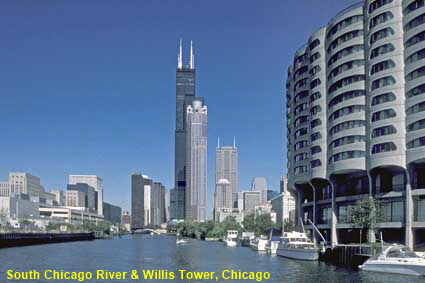Illinois
The arrival of French explorers Louis Jolliet and Father Jacques Marquette in 1673 marked the beginning of European exploration of the area. Seven years later, other French explorers constructed a fort near present day Peoria. The name Illinois comes Pays des Illinois (Illinois Country), the name given to the Upper Mississippi watershed after a group of local Indian tribes known to the explorers as the Illinois Confederation. Illinois Country was governed as part of the French province of Canada and in 1699 the town of Cahokia was founded close to mounds that are the remnants of an Indian city abandoned in the 15th century. In 1717 Illinois became part of French Louisiana then after the 1763 defeat of France in the French & Indian War it became British territory. In 1778, American Revolutionary Major George Rogers Clark led a small force that captured the British administrative town of Kaskaskia and he claimed the whole of Illinois Country for Virginia. Shortly after the end of the Revolutionary War, Illinois Country became part of the Northwest Territory of the USA. Illinois Territory was created in 1809, covering modern day Illinois and also Wisconsin, eastern Minnesota and the upper peninsula of Michigan. In 1818 the southern part of the territory became the state of Illinois with its first capital at Kaskaskia.In 1819, Vandalia took over as capital until in 1837 a group of state legislators led by Abraham Lincoln succeeded in moving the capital to Springfield, where it remains to this day.
South Chicago River & Willis Tower, Chicago
Chicago is the home of the skyscraper, so it is fitting that it has an office building that was for many years the tallest in the world. The Sears Tower was built in 1974. Its tower is 443 metres/ 1450 feet high and has 110 floors. This made it the tallest building in the world until the Petronas Towers in Malaysia took the title in 1998 with a height of 452 metres/ 1483 feet. It . If the height of the Sears Tower is measured to the tips of the antennae it is 520 metres/ 1730 feet high, but such structures are regarded as removable and hence they do not count in the list of tallest buildings. In 2009 it was renamed the Willis Tower but most people in Chicago still call it the Sears Tower. On a clear day the view from the Skydeck on the 103rd floor is spectacular. At sunset, watching the sun sinking below the distant horizon and the Chicago lights coming up is unforgettable. The Willis Tower remained the tallest building in the Western hemisphere until May 10, 2013 when was overtaken by the One World Trade Center in New York.
Lincoln Campaign Wagon, Lincoln Home NHS, Springfield
One historical figure who will always be associated with Illinois is Abraham Lincoln, the 16th President of the USA. He was born in 1809 in Kentucky and spent much of his childhood in Indiana. His family moved to Illinois in 1830 and in the following year after reaching the age of majority Abraham moved to New Salem. He tried twice to get elected to the state legislature, but was unsuccessful. In 1834 he succeeded in getting elected as a Whig representative, the start of a long political career that took him all the way to the White House. He moved to Springfield in 1836 and in 1842 he married Mary Todd. They bought a house in Springfield in 1844 and lived there until 1861 when he was elected President. The house and the streets around it has been preserved as Lincoln Home National Historic Site. Parked in 8th Street is a reconstruction of one of Lincoln’s Presidential campaign wagons. Designed to look like a log cabin it aimed to impress upon voters that Lincoln was a humble man born in a log cabin. A poster on the side bears his campaign slogan ‘Honest Old Abe’.
Apple River Fort, Elizabeth
Back in 1832 the natives were restless. The US government had negotiated in 1804 with a group of Sauk and Meskwaki Indians to buy all of their tribal land east of the Mississippi. Under the agreement the tribes could stay on the land until it was sold to settlers, but they would then have to relocate west of the Mississippi. Unfortunately it seems that the negotiations had not been authorised by the Tribal Councils. When the land was sold to settlers in 1828, the tribes were divided about whether they could resist the might of the USA and many chose to relocate. However, a band led by Black Hawk decided to try to retain the land. They were known as the British Band as they often flew the Union Jack as a sign that they did not recognise US sovereignty. The tactics of the British Band were initially to apply peaceful pressure but in May 1832 violence erupted when they encountered two militia battalions near Stillman’s Run in north Illinois. Although Black Hawk claimed that his intentions were peaceful, a battle broke out and the militia were routed. Thus began a war that lasted 16 weeks. Many settlers fled east but others built fortifications as quickly as they could. A fort built at Apple River proved its worth when Black Hawk attacked it on June 24, 1832. Fierce resistance forced him to call off the attack. Black Hawk surrendered to an Indian Agent on August 27, 1832 at Prairie du Chien and he was imprisoned for a time. The hastily built forts were then abandoned and left to decay. Apple River Fort outside the town of Elizabeth has been reconstructed to give a feel for the years when Illinois was a frontier state.

Click on Minimap to navigate
Illinois State Capitol, Springfield
The current Illinois State Capitol is the sixth building used for this purpose. The story of the earlier capitols can be found on the Springfield page. By the end of the Civil War, the existing State Capitol had become too small, so plans were drawn up for a new capitol on a site known at the Mather Block, the highest piece of ground within the Springfield city limits. The start of work was delayed by popular pressure to make this high ground the site of Lincoln’s Tomb, but Mary Lincoln decided that he should be buried in Oak Ridge Cemetery. Work on the new capitol finally started in 1868 and it was completed 20 years later. Although the domed design of the Illinois State Capitol is very similar to the design of many US state capitols, there is something about this one that makes it stand out. At 110 metres (361 feet) high it is taller than the US Capitol in Washington DC, and that height gives it a real aura of grandeur. No buildings in Springfield are allowed to be so tall that they look down on the capitol, the Hilton Hotel is technically slightly taller but meets this rule because it stands on lower ground. You can check this out by clicking Tab 2 to see a picture of the capitol from the top floor of the Hilton.


We have other pages on Illinois. Click below or on the Minimap:
DLU130523
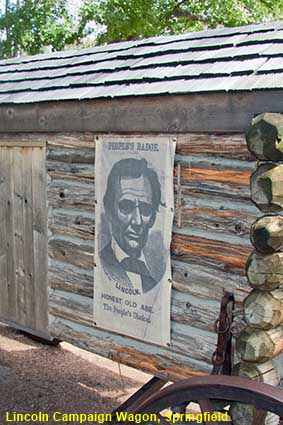
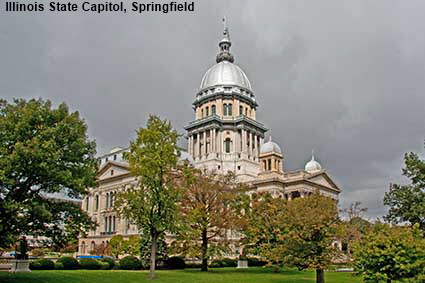
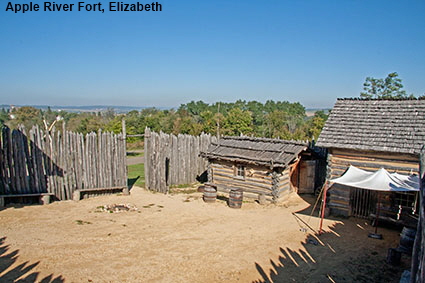
David Davis Mansion, Bloomington
Bloomington is a city near the centre of the state of Illinois. It has a twin city called Normal just 3 km (2 miles) north of its centre and together they form the Bloomington-Normal metropolitan area. We stayed the night in Normal but in the morning we headed into Bloomington to see its crown jewel, the David Davis mansion. David Davis had been a friend, mentor and campaign manager for Abraham Lincoln and in 1862 Lincoln appointed him a justice of the US Supreme Court. This meant that he had to spend a lot of time in Washington DC, but his wife wanted to remain in Bloomington. Davis commissioned architect Alfred Piquenard to design a mansion in Bloomington to provide a residence primarily for his wife. Piquenard also designed the state capitol in Springfield. The 36 room Italianate mansion, then known as Clover Lawn, was completed in 1872. The David Davis Mansion and part of its grounds have been preserved and are open to the public Wednesday to Sunday. Unfortunately we were in Bloomington on a Monday, and so we were not able to tour the mansion. There is also some interesting architecture in Normal; click Tab 2 to see the Normal Theater, dating back to 1937.
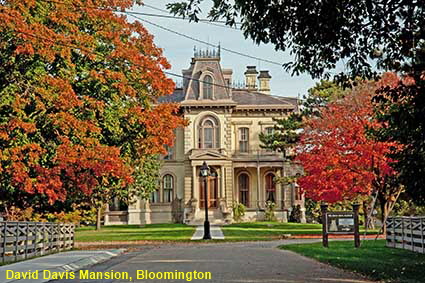

© Mike Elsden 1981 - 2025
The contents of this page may not be reproduced in full or in part without permission
